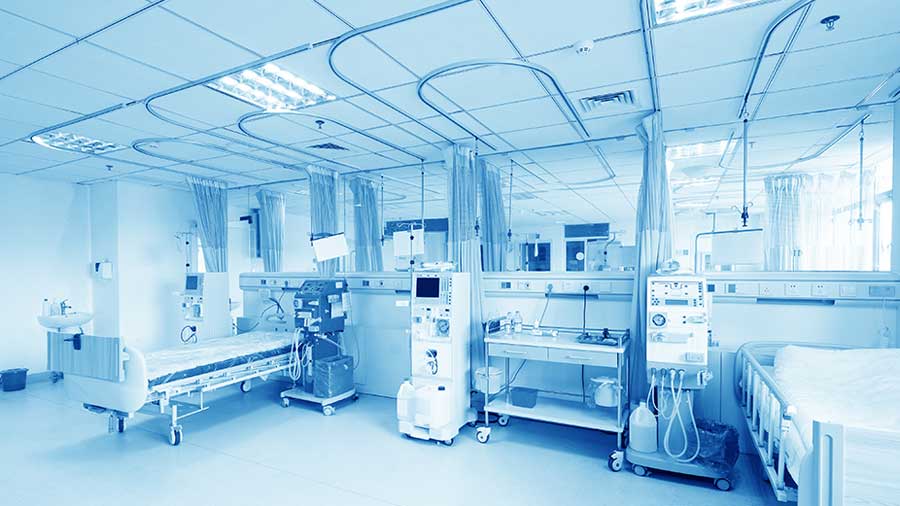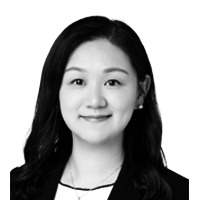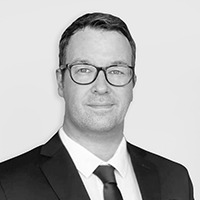- Indonesia’s healthcare industry presents a lucrative investment opportunity for foreign investors given its market size and government spending on universal healthcare.
- The implementation of the universal healthcare program, the largest in the world, has resulted in increased healthcare access and hence demand for hospitals, doctors, and medical equipment.
- The government has eased regulatory hurdles to give foreign investors a larger stake in certain sub-sectors of the industry, such as raw material production for pharmaceuticals, and hospitals.
Indonesia’s healthcare industry is a lucrative investment opportunity for foreign investors as the growth of its middle-class and the introduction of universal healthcare has driven demand in almost all aspects of the industry from hospitals to pharmaceuticals to medical devices.
The government, in its attempt to open the sector more to foreign investors, made amendments to the country’s Negative Investment List (NIL) in 2017 that gave foreign investors a larger stake in certain sub-sectors of Indonesia’s health industry, such as in hospitals, specialized clinics, and medical equipment.
Furthermore, by improving the country’s healthcare infrastructure, the government hopes this will encourage Indonesians who seek medical treatment abroad to spend domestically. More than 1.2 million Indonesians spend more than US$2 billion annually on healthcare overseas, mainly in neighboring Singapore and Malaysia.
Universal healthcare in Indonesia
Indonesia introduced its universal healthcare program, the JKN, in 2014, which has since grown into the world’s largest, covering over 200 million people.
The program is run by the Social Security Administrator for Health (BPJS) agency, and every citizen as well as expats working in the country are mandated to join the program. All companies in the country are responsible for registering their employees and paying a percentage of their premiums.
Those registered with the BPJS program are eligible to receive free health services ranging from simple dental check-ups to serious procedures, such as organ transplant.
In the private sector, the employer must pay four percent and the employee the remaining one percent. For civil servants, the government contributes three percent while the employee contributes two percent.
In addition to the employee, the premium also covers their spouse and up to three dependent children up to the age of 21. Starting from June 2020, the government has been doubling premiums for the program, hoping this can reduce the program’s deficit which reached US$2.3 billion in 2019.
Private health insurance
Roughly 20 million Indonesians are covered by private health insurance, although this is dwarfed by the number covered by the JKN program. Additionally, as businesses in the country are obligated to enroll their employees in the program, many have chosen not to participate in private health insurance schemes.
The ranks of those that can afford private insurance are increasing, as the middle and affluent-class demand faster and quality service. Private insurers will play an important role as an add-on to public coverage as the JKN, although providing a free service, will only pay up to the patient limit.
Structure of the pharmaceutical industry
Indonesia’s pharmaceutical industry has experienced annual growth between 10-13 percent, boosted from the rollout of national health insurance. The policy has been a boon for the industry – ASEAN’s largest – which recorded more than US$9 billion in sales in 2019 and is expected to reach US$10 billion by 2021.
Generic drugs dominate
Some 60 percent of the market is made up of prescription medicines and 40 percent from over the counter (OTC) drugs. However, the vast majority of both these medicines are generic drugs, which accounts for the largest segment of the pharmaceutical market; approximately 70 percent of the local drug market by volume or some US$700 million.
The JKN program has, in particular, boosted the sales of the country’s generic drug products, and the BPJS agency has mandated that up to 90 percent of the drugs on the Essential Medicines List, are to be generics. This industry is dominated by local producers, such as Kalbe Farma (the largest private pharmaceutical company in the region) and state-owned enterprises Kimia Farma and Biofarma who make up some 75 percent of the market share.
Dependency on import of raw materials an opportunity for foreign investors
Some 90 percent of the raw materials used in drugs production, however, are imported, which prompted the government to amend the NIL to foreign investors 100 percent ownership of factories that produce these essential raw materials.
Despite the government encouraging the use of generic drugs to control costs, these types of medicines have a very low-profit margin, around 20 percent compared to 60 percent for branded medications. The industry is also not conducive for innovative drug makers for the near term due to low spending on research and development, a shortage of qualified scientists, and issues with enforcing patents and other intellectual property protection.
Impact of COVID-19 on drug makers
Pharmaceutical firms were operating at 50 to 60 percent capacity as supply chains were disrupted, in particular, for the import of raw materials.
Companies that had the most diverse product portfolios, and were not reliant on a small number of drug products (especially specialist drugs), were more resilient in withstanding the market shock caused by the COVID-19 pandemic. The number of patients visiting hospitals for treatment for acute or chronic conditions slowly decreased during the pandemic, impacting companies that are built on a single product line.
Increasing potential for niche products
In the long term, the pharmaceutical industry will see a surge in growth as demand increases for products used to treat lifestyle and chronic related diseases. Companies will need to find novel drug delivery areas as demand shifts from generic drugs and into niche products, such as dietary supplements and other aspects of biopharmaceuticals.
Market for hospitals and healthcare facilities
Indonesia has 2,925 hospitals providing just over 318,000 beds, or 1.17 beds per thousand population – the lowest rate in ASEAN.
Some 63 percent of the country’s hospitals are privately managed, and the low number of hospital beds reflects the growing opportunity for foreign investors to fill the shortfall. There is an increasing demand for new hospitals in second-tier cities such as Surabaya and Bandung as more of the population engage with the universal healthcare program.
There are currently more than 26,000 healthcare facilities where patients can get medical treatment under the JKN program. This includes over 2,000 hospitals, 9,000 community health centers and private clinics, over 1,100 dentist clinics, and 1,000 opticians.
The government has allowed foreign investors to have 67 percent ownership in private hospitals and 70 percent ownership for investors from ASEAN. This is also the case for private health clinics, although foreign investors are limited to specialized medical services and not basic medical clinic services.
The main challenges for hospital operators will be recruiting doctors (the country only has 0.4 doctors per 1,000 population) in addition to choosing the right location to build the hospitals. The opportunity lies in second tier cities as bed occupancy is still low and thus there is potential for growth. Furthermore, second tier cities offer lower property prices and hence profitability is usually higher than in first tier areas such as Jakarta.
Investors should closely work with reputable medical schools and vocational schools and provide access to high-quality equipment and training. Hospitals are also advised to allow specialists to work in other practices/hospitals, enabling them to expand their skillset and experience.
Telemedicine investment outlook
The integration of information and communication technology (ICT) into healthcare will also accelerate reforms in Indonesia’s healthcare sector. The use of healthcare apps, for instance, could transform the way hospitals and doctors store their records, collect, and share patient data.
The coronavirus pandemic has accelerated the growth of digital healthcare and will become the new norm in the region post-COVID-19. Local healthcare app, Alodokter, recorded more than 30 million active users since March 2020 (one and a half times higher than pre-COVID-19 traffic). Another telemedicine app, Halodoc, as well as ride-haling giant, GoJek, partnered with the Ministry of Health to provide COVID-19 diagnostics in remote areas.
In a country that has only 0.4 doctors per 1,000 population, in addition to geography of over 17,000 islands, telemedicine makes healthcare accessible to the furthest regions and helps mitigate pressure on the existing healthcare system.
The government has also sought to improve connectivity in the archipelago through the completion of the Palapa Ring Project, which aimed to provide access to 4G internet services to more than 500 regencies across the country. Costing US$1.5 billion to complete, the project comprised of 35,000km (21,747 miles) of undersea fiber-optic cables and 21,000km (13,000 miles) of land cables, stretching from the westernmost city in Indonesia, Sabang to the easternmost town, Merauke. Additionally, the cables also transverse every district from the northernmost island, Mianagas, to the southernmost island, Rote.
Medical devices industry
Indonesia’s medical device industry is worth an estimated US$4.5 billion in 2019 with the majority (US$2.8 billion) coming from imported products.
Imported products are largely sophisticated medical instruments, such as diagnostic tools and medical lasers. By contrast, exports of medical devices reached less than US$267 million in 2019, dominated by low added-value products, such as masks, surgical gloves, and hospital furniture.
Foreign investors are limited to 49 percent ownership and must apply for a special license from the Ministry of Health (MoH) to supply high-tech medical equipment sector. For the majority of low-tech medical equipment, the MoH will only issue a license on a case by case basis.
Demand for medical devices will be driven by the expansion of private and government hospitals and clinics as well as improvements on existing facilities. Another factor behind this expected demand is the rise of non-communicable diseases and the diagnosing of which require advanced and high-tech equipment.
It is expected that the ability of foreign manufacturers to import medical devices will become less cumbersome, especially as the government continues to reform regulations on ease of doing business. Further, Indonesia is also a member of the ASEAN Medical Device Directive (AMDD), a set of directives that aim to harmonize regulations across the region and require medical device manufacturers to register their devices in any member state where they have production.
Established foreign firms who already have a foothold in the country are Siemens, GE Healthcare, and Pfizer. These companies have greatly benefited from the rollout of the JKN program for equipment such as MRI machines, PET-CT scanners, and ICU equipment, among others.
For further information and assistance, please reach out to asia@dezshira.com.








